With new technologies revolutionizing data collection, wildlife researchers are becoming increasingly able to collect data at much higher volumes than ever before. Now we are facing the challenges of putting this information to use, bringing the science of big data into the conservation arena. With the help of machine learning tools, this area holds immense potential for conservation practices. The applications range from online trafficking alerts to species-specific early warning systems to efficient movement and biodiversity monitoring and beyond.
However, the process of building effective machine learning tools depends upon large amounts of standardized training data, and conservationists currently lack an established system for standardization. How to best develop such a system and incentivize data sharing are questions at the forefront of this work. There are currently multiple AI-based conservation initiatives, including Wildlife Insights and WildBook, that are pioneering applications on this front.
This group is the perfect place to ask all your AI-related questions, no matter your skill level or previous familiarity! You'll find resources, meet other members with similar questions and experts who can answer them, and engage in exciting collaborative opportunities together.
Just getting started with AI in conservation? Check out our introduction tutorial, How Do I Train My First Machine Learning Model? with Daniel Situnayake, and our Virtual Meetup on Big Data. If you're coming from the more technical side of AI/ML, Sara Beery runs an AI for Conservation slack channel that might be of interest. Message her for an invite.
Header Image: Dr Claire Burke / @CBurkeSci

Explore the Basics: AI
Understanding the possibilities for incorporating new technology into your work can feel overwhelming. With so many tools available, so many resources to keep up with, and so many innovative projects happening around the world and in our community, it's easy to lose sight of how and why these new technologies matter, and how they can be practically applied to your projects.
Machine learning has huge potential in conservation tech, and its applications are growing every day! But the tradeoff of that potential is a big learning curve - or so it seems to those starting out with this powerful tool!
To help you explore the potential of AI (and prepare for some of our upcoming AI-themed events!), we've compiled simple, key resources, conversations, and videos to highlight the possibilities:
Three Resources for Beginners:
- Everything I know about Machine Learning and Camera Traps, Dan Morris | Resource library, camera traps, machine learning
- Using Computer Vision to Protect Endangered Species, Kasim Rafiq | Machine learning, data analysis, big cats
- Resource: WildID | WildID
Three Forum Threads for Beginners:
- I made an open-source tool to help you sort camera trap images | Petar Gyurov, Camera Traps
- Batch / Automated Cloud Processing | Chris Nicolas, Acoustic Monitoring
- Looking for help with camera trapping for Jaguars: Software for species ID and database building | Carmina Gutierrez, AI for Conservation
Three Tutorials for Beginners:
- How do I get started using machine learning for my camera traps? | Sara Beery, Tech Tutors
- How do I train my first machine learning model? | Daniel Situnayake, Tech Tutors
- Big Data in Conservation | Dave Thau, Dan Morris, Sarah Davidson, Virtual Meetups
Want to know more about AI, or have your specific machine learning questions answered by experts in the WILDLABS community? Make sure you join the conversation in our AI for Conservation group!
No showcases have been added to this group yet.
- @sam.cope.king
- | she/her
ProtectedSeas
Marine Monitor (M2) Senior Scientist



- 0 Resources
- 1 Discussions
- 5 Groups
- @julia05
- | she/her
- 0 Resources
- 0 Discussions
- 3 Groups
- @roxirisa
- | roxi
Biologist I consider myself a data scientist with a passion for nature and with an extensive experience in species distribution modeling, handling large data sets from different sources such as gbif, eBird, xeno-canto, Worldclim, Terraclimate, ocean color e NASA among others. But
- 0 Resources
- 0 Discussions
- 9 Groups
- @a.zubiria
- | she/her
- 0 Resources
- 3 Discussions
- 11 Groups
Chief Marketing Officer 🌎 Building Transparency through Data & Storytelling

- 2 Resources
- 3 Discussions
- 8 Groups
- 0 Resources
- 0 Discussions
- 14 Groups

- 0 Resources
- 0 Discussions
- 3 Groups
- @martinyonga
- | He/His
a Research Entrepreneur always looking for ways to demonstrate the interconnectedness of nature & our livelihoods

- 0 Resources
- 0 Discussions
- 3 Groups
- 0 Resources
- 1 Discussions
- 7 Groups
- @eccrc25
- | she/they
- 0 Resources
- 0 Discussions
- 5 Groups
I am a recently graduated Computer Scientist and Mathematician passionate about animals and nature.
- 0 Resources
- 0 Discussions
- 10 Groups

- 0 Resources
- 0 Discussions
- 15 Groups
Careers
The Senior Conservation Technology Specialist will be responsible for providing technical advice and capacity development to GWP project teams on conservation technology, distilling challenges and lessons from project...
22 September 2022
Link
Listen to Tanya Berger-Wolf's conversation about AI for Wildlife Conservation and imageomics with Lauren Burke on the Women In Analytics After Hours Podcast.
21 September 2022
Amazon Sustainability is welcoming proposals related to climate risk/resilience, life cycle assessment, circular strategies, and more. Selected PIs receive unrestricted funds, no more than $80,000 USD on average
20 September 2022
As UNGA begins, Google.org is committing $25M to accelerate progress towards the UN's Sustainable Development Goals. Applications are now open for nonprofits and social enterprises.
16 September 2022
IBM Research Scientists are charting the future of Artificial Intelligence, creating breakthroughs in quantum computing, discovering how blockchain will reshape the enterprise, and much more. Join a team that is...
16 September 2022
Join my brand new group at MIT in Fall 2023!!
12 September 2022
Careers
The BirdNet team are seeking to fill three roles, including an Ecologist, Data scientist and an Embedded Systems Engineer based in Germany.
9 September 2022
At the Inria Sophia Antipolis - Méditerranée center. The project will pursue two different methodological goals: (1) explore the use of natural language bottlenecks describing visible traits or other visual...
1 September 2022
Silva et al - - R package to train convolutional neural networks & employ them to classify sounds - sound event classification pipeline, from annotating recordings to automating trained networks - case...
1 September 2022
This is the first in a series by David Thau on the promise and challenges to using AI and machine learning to create a planetary environmental management system.
31 August 2022
Article
APPLY NOW! The Sovereign Nature Initiative has partnered with the Kenya Wildlife Trust to experiment with emerging technologies to support their predators' conservation work.Challenges will focus on:1. Lion...
30 August 2022
This project is part of the Conservation AI Network. We aim to help threatened species & manage invasive species using leading edge analytics and artificial intelligence algorithms. The primary purpose of the...
29 August 2022
August 2025
event
September 2025
event
event
event
event
October 2025
event
event
event
December 2025
event
March 2026
September 2024
event
17 Products
Recently updated products
| Description | Activity | Replies | Groups | Updated |
|---|---|---|---|---|
| Hey Wildlabbers! Is anyone planning to go to the Academic Data Science Alliance (ADSA) annual meeting next week in San Antonio? I'll be... |
|
AI for Conservation, Community Base | 1 year 10 months ago | |
| This is super cool! Me and @Hubertszcz and @briannajohns and several others are all working towards some big biodiversity monitoring projects for a large conservation project here... |
|
AI for Conservation, Autonomous Camera Traps for Insects, Camera Traps, Funding and Finance | 1 year 10 months ago | |
| Hello! If you were interested in the DSAIL Tech4Wildlife Workshop last week exploring how AI can be used to aid conservation efforts, you... |
|
AI for Conservation, Conservation Tech Training and Education | 1 year 10 months ago | |
| Very helpful, thank you. One more thing, are there any broad skills that apply to all areas of conservation tech that may be helpful to learn/improve, e.g data analysis? |
|
AI for Conservation, Conservation Tech Training and Education, Early Career | 1 year 11 months ago | |
| Hi everyone! We were so delighted to have Adrien along to our June Variety Hour to share more about the Nocturnal Bird Migration project. If you missed it, you can catch up with... |
|
AI for Conservation | 2 years 1 month ago | |
| During Andrew's talk in our June Variety hour (see here), @dmorris put out a call in the chat that might be relevant to our marine and ai... |
|
AI for Conservation, Marine Conservation | 2 years 1 month ago | |
| During Andrew's talk, @dmorris put out a call in the chat that might be relevant to folks catching up on the video, so I'll drop it here too: Re: Andrew's fish work... part... |
|
AI for Conservation, Camera Traps, Drones, Marine Conservation | 2 years 1 month ago | |
| Thanks, @pvlun,@pvlun we are going to try it to develop a model for feral cat and rat detection in camera trap. |
|
AI for Conservation | 2 years 1 month ago | |
| A new COST action has been announced which will focus on the use of computer vision for monitoring insects.InsectAI will run for 4 years... |
|
AI for Conservation, Autonomous Camera Traps for Insects, Camera Traps | 2 years 1 month ago | |
| Carly, that would be great! Thanks! I work with soundscapes and love the work of Rainforest Connection! I'll send you an email (@CUNY) to coordinate! |
|
Acoustics, AI for Conservation, Conservation Tech Training and Education, Drones, eDNA & Genomics, Emerging Tech, Geospatial | 2 years 2 months ago | |
| Hi Donya! You might check out the Conservation Tech Directory to see what projects/organizations/tools best align with your interests and skills. |
|
Acoustics, AI for Conservation, Camera Traps, Drones | 2 years 2 months ago | |
| Hey everyone, I am super excited to share two announcements with the Community!🏆🌍 Our flagship Data4Good project - Mbaza AI... |
|
AI for Conservation, Camera Traps | 2 years 3 months ago |
Congo Basin activity?
30 March 2023 9:14pm
Looking for entry level remote role in GIS/environmental analysis in the United States
22 April 2023 12:05am
Catch up with The Variety Hour: April 2023
21 April 2023 10:42am
Call for survey participants (AI/ML practitioners)
19 April 2023 3:17pm
Camera traps, AI, and Ecology
14 April 2023 10:08am
7 June 2023 9:42am
1 August 2023 10:46am
1 September 2023 8:06am
Segment Anything
13 April 2023 9:16pm
Project Manager, Rainforest Connection (RFCx)
12 April 2023 1:09pm
The 59th Annual Meeting of Illinois Chapter of The Wildlife Society
12 April 2023 5:24am
Who's going to ESA in Portland this year?
31 March 2023 9:27am
4 April 2023 9:58am
That sounds great. I think you should encourage people to bring a bit of tech with them, can be a good conversation starter/ice-breaker
4 April 2023 4:04pm
Good idea! I've got a ransom assortment of different acoustic recorders I can bring along
5 April 2023 11:58pm
Indeed, I'll be there too! I like to meet new conservation friends with morning runs, so I will likely organize a couple of runs, maybe one right near the conference, and one somewhere in a nearby park where we can look for wildlife. The latter would probably be at an obscenely early hour, so we can drive somewhere, ideally see elk (there are elk within 25 minutes of Portland!), and still get back in time for the morning sessions.
Computer Vision Competitions on Natural-World datasets
5 April 2023 4:26pm
Rhino horns in medicine
2 April 2023 2:22pm
Updates about Arbimon for Ecoacoustics - free, cloud based analytical tool
31 March 2023 11:09am
31 March 2023 3:43pm
Yes please reach out with any questions on acoustic monitoring, Arbimon, RFCx, etc.!
The WILDLABS Variety Hour: March 2023 - YouTube
30 March 2023 4:04pm
BearID Interview with AWS
29 March 2023 12:35am
AI has critical role to play in helping tackle the climate crisis, new Turing white paper finds
27 March 2023 12:04pm
Catch up with The Variety Hour: March 2023
23 March 2023 11:09am
ARSET - Fundamentals of Machine Learning for Earth Science
21 March 2023 4:49pm
Ol Pejeta Conservancy and Mbaza AI
16 March 2023 7:18pm
Computer Science student looking to work for wildlife
5 March 2023 10:04pm
14 March 2023 2:00pm
Great information! Thank you for sharing this. I actually have Masters in Zoology and have done some field work in Marine Conservation. Since then I have worked in Science education and eventually switched to Software Programming. My dream has always been to work in Conservation, however life happened and I had to give up on this pipe dream. I currently work as a Developer in a contractor role for the Federal Government. Would someone with my experience have an advantage in conservation Tech?
14 March 2023 2:58pm
I think the real demand in conservation tech is for transdisciplianry individuals. If you look at all the stand-out people in this space they are people who occupy multiple domains that are traditionally isolated. These are people who talk fluently in computer science and ecology, for example. Not only this, they are also people who create and imagine in ways that intertwin ideas and concepts across these domains. Its these people, thinking in these ways, that lead to innovations that really move us forward. Some of these people started out where you are now, having crossed domains through their career and then seeing opportunities to bring these skills together in imaginative ways.
14 March 2023 9:53pm
I couldn't agree more with both of these comments tom! I'm reading hundreds (literally hundreds) of applications for open WILDLABS roles at the moment, and the ones that stand out are those where it's really clear they're following genuine curiosity across different disciplines. If you're in conservation, it's the evidence of interest in tech (courses, projects, things you're trying and learning yourself). For tech, it's getting into conservation - all the things you mentioned.
Proposals wanted for Innovation in Practice
6 March 2023 10:34pm
Moveapps EMAC23 Coding Challenge – Participate now!
3 March 2023 7:45am
Underwater Fish Datasets from the Mediterranean
15 August 2022 11:45pm
26 September 2022 9:32pm
Not sure if audio data would be of any use to you, but if so FishSounds has some - I just tried their search function and there is a location tag for 'Mediterranean & Black Sea'.
You might try reaching out to the folks at Name that Fish, Innovasea, or perhaps an entity on the Fisheries Tech list would have Mediterranean stuff?
21 October 2022 7:52am
Hi,
If this is still relevant, you can try reaching out to the Belmaker lab, they do BRUV surveys in the eastern Mediterranean and have hours of video, some of it I believe is annotated. Particularly, Shahar might be helpful, he's the PhD student running point on the project.
2 March 2023 2:03pm
We have made available our underwater videos on YouTube as a playlist https://www.youtube.com/playlist?list=PLnhVZKKy8WkZKriCIV6r7upWhHNVrU_7L
It's about 1.113 short video clips with annotation and each is linked to the corresponding www.iNaturalist.org observations. The iNaturalist.org observations are research quality and have been uploaded to GBIF.org. The observations have been made between 2014 and 2022 around the Ionian Islands (Greece).
If you would need the original videos please contact me.
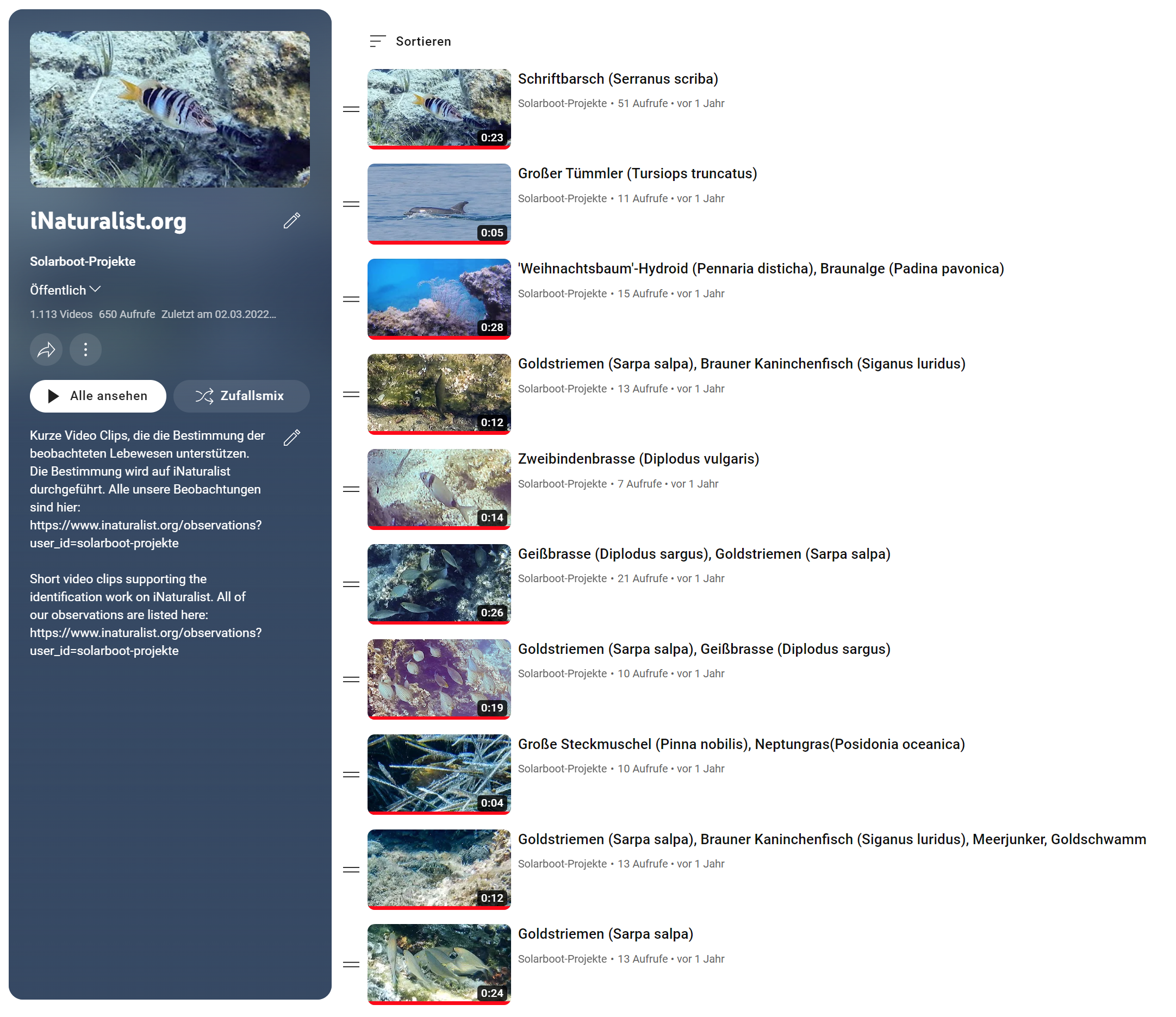
Elephant Recognition
14 January 2023 10:01am
14 January 2023 3:39pm
I can be reached at techie.simon@gmail.com
16 January 2023 2:30pm
Hi Simon,
i've popped you an email too, but actually sharing some more information here about what you're after will mean you'll be able to get better help from our full community.
What are you looking for in particular? It sounds like there is particular piece of software you've seen that could be useful in your work - do you know what it's called? What do you need to do - image recognition, call recognition? Alerts when calls happen or are you looking for something more detailed? The more you tell us about what you're trying to do the better we'll be able to help!
Steph
26 February 2023 1:44pm
Hi Steph,
This should be a simple project. Recently I came across a website with a sample video I am not sure whether it was from the wild Labs website. Where a camera is seen spotting a raccoon and giving an alert saying raccoon detected. My expectations are on similar lines, the only difference here is to change the raccoon to an elephant or a tiger. Please advice.
The Arbimon newsletter is back!
23 February 2023 11:34pm
Tropical pilot of insect camera traps
22 February 2023 12:17pm
Texas Chapter of The Wildlife Society’s Annual Meeting 2023
20 February 2023 10:56pm
Operation Pangolin launches to save world's most trafficked wild mammal
16 February 2023 7:51pm
17 February 2023 1:50am
Zooplankton Prosome and Lipid Sac Segmentation
15 February 2023 1:44pm
AI, sensors enhance wildfire detection
15 February 2023 10:27am








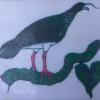

















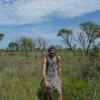

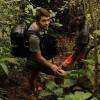

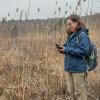










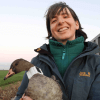





25 April 2023 5:08pm
greetings!
i sent you a PM regarding this, feel free to contact me however is most convenient for you -
regards,
chris